Making Good Choices: Survival Exercises Teach Decision Making
By Bruce Griffiths M.S.
What You Choose Is Who You Are
I’m often asked which of the 41 Polaris® competencies are most important. In my opinion, the winners would be Influence Skills and Problem Solving & Decision-Making. Having a powerful voice and consistently making good choices are both vital to work, and perhaps life success.
The ability to influence others also involves many personal, leadership, and interpersonal competencies. To exercise influence on a team you must understand the nuances of directing and involving others (Influence). But you must also be proactive (Initiative), confident (Assertive), well-spoken (Informal Communication), respected (Relationship Building), and you must have a legitimate agenda (Mission Focus).
Likewise, the Problem Solving & Decision-Making competency represents another critical skill set. Much of who you are comes from the many, many choices (decisions) you’ve made: your footprints in the sand, snow or cement. Like Influence, good decision-making (good judgment), especially on a team, involves a supporting cast of competencies including Creativity, Learning Agility, Conflict Management, and sometimes Risk-Taking.
Teaching Team Decision-Making Using Survival Simulations
Many resources (books, videos, articles) have been developed to teach the principles and practices of good decision-making. Over the years at OSI we’ve found that the many survival simulations provided by Human Synergistics are most valuable, both as team building exercises and as instruction in decision-making. I must admit my Coast Guard background stirs interest in learning how to survive various search and rescue scenarios, but the real point of the survival series is experiential learning around team consensus in decision-making. The exercises combine team synergy through the principles of consensus and the basics of good problem-solving.
To prove this point, we’ve lost teams on the moon, at sea, in the Australian outback, in the desert, in the arctic, and in the jungle. Survival exercises involve one of these life-or-death scenarios with participants being the simulated survivors of an airplane crash or ship wreck, forced to rank order a list of items they might find useful to their survival. The absolute difference between individual scores and team scores compared to an expert ranking provides a measure of the quality of decisions. Truly synergistic teams can beat the average of individual scores (a baseline standard for individual solutions) AND their best individual. This increased probability of survival (sometimes a life-or-death improvement!) provides dramatic proof of the principles.
Surviving Remotely
As COVID shut down our live workshops we put the survival series on the shelf, but were recently pleased to learn that several remote versions had been released. So we shifted to an online version and recently successfully ran Desert Survival®. This online version incorporated videos introducing the situation and providing the final solution. Plus as an upgrade, the software automatically scored and compared individual solutions and team decisions. We organized the experience, using Zoom and Zoom breakout rooms to manage the survival teams (three in this case). This, coupled with the Desert Survival® online interface, was easy, fun and well received! The exercises are truly engaging, completely experiential and take less than two hours. For more information see Human Synergistics’ Desert Survival Situation Product flier. We’re also happy to provide additional information on how we’ve incorporated the survival series into leadership training based on the Polaris® Competency Model.


